Quick and Effective Tips for Headache Relief
Headaches are a common condition that can be caused by a variety of factors, such as tension, dehydration, sinus problems, migraines, or more serious underlying conditions. The symptoms can vary from mild to severe pain, nausea, sensitivity to light or sound, and difficulty concentrating. There are several types of headaches, including tension headaches, migraines, cluster headaches, sinus headaches, and medication overuse headaches. Each type has its own causes, symptoms, and treatment options. Some common treatments for headaches include over-the-counter pain relievers, such as acetaminophen, ibuprofen, or aspirin. In some cases, prescription medications may be necessary. Other treatments can include relaxation techniques, stress management, hydration, and avoiding triggers such as certain foods or activities. It is important to see a doctor if you experience frequent or severe headaches, especially if they interfere with your daily activities or quality of life. Your doctor can help you determine the underlying cause of your headaches and recommend an appropriate treatment plan. We will discuss the following topics:
Causes of headaches
Symptoms of headaches
Types of headaches
Headache location and its meaning
Complications of headaches
Prevention of headaches
Treatment for headaches
Natural management of headaches
Herbal remedies
When to seek urgent medical care
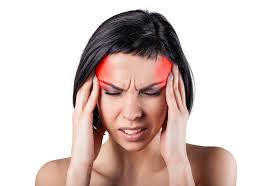
Causes of headaches
Headaches can be caused by a variety of factors. Here are some of the most common causes:
- Tension: Tension headaches are the most common type of headache and are often caused by stress, anxiety, or muscle tension in the head, neck, or shoulders.
- Dehydration: Not drinking enough water can lead to dehydration, which can cause headaches.
- Sinus problems: Sinus headaches are caused by inflammation or congestion in the sinuses, which can lead to pressure and pain in the head.
- Migraines: Migraines are a type of headache that can be caused by a variety of triggers, such as hormonal changes, certain foods, stress, or changes in sleep patterns.
- Cluster headaches: Cluster headaches are a rare type of headache that occur in cyclical patterns, often several times a day for weeks or months at a time. They are usually one-sided and can be extremely painful.
- Medication overuse: Overuse of pain medications, such as aspirin, ibuprofen, or acetaminophen, can lead to rebound headaches, which occur when the medication wears off.
- Medical conditions: Headaches can also be a symptom of certain medical conditions, such as high blood pressure, infections, or brain tumors.
- Hangover: Caused when you consume alcohol, it causes dehydration and inflammation in the body, which can lead to a headache. Alcohol can also cause blood vessels in the brain to expand and contract rapidly, which can trigger a headache.
- Environmental factors: Exposure to certain environmental factors, such as loud noises, bright lights, or strong odors, can trigger headaches in some people.
If you are experiencing frequent or severe headaches, it’s important to see a doctor to determine the underlying cause and receive appropriate treatment.
Headache location and its meaning
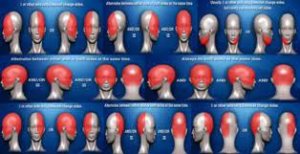
The location can provide some information about its underlying cause. Here are some examples:
- Frontal headaches: Frontal headaches are located in the front of the head, typically behind the forehead. They can be caused by sinus problems, tension, or migraines.
- Temporal headaches: Temporal headaches are located on the sides of the head, near the temples. They can be caused by tension or migraines.
- Occipital headaches: Occipital headaches are located at the base of the skull, near the back of the head. They can be caused by tension, migraines, or nerve problems.
- Cluster headaches: Cluster headaches are located around or behind one eye. They can be very painful and occur in cycles.
- Sinus headaches: Sinus headaches are located in the forehead, cheeks, and nose. They are caused by inflammation or infection in the sinuses.
- Cervicogenic headaches: Cervicogenic headaches are located in the neck and can spread to the back of the head or behind the eyes. They are caused by problems in the neck, such as arthritis or injury.
- Rebound headaches: Rebound headaches can occur anywhere in the head and are caused by overuse of medication.
It’s important to note that the location of a headache alone is not enough to diagnose its cause. Other factors such as the type of pain, frequency, duration, and associated symptoms must also be taken into account. If you experience frequent or severe headaches, it’s best to consult a healthcare provider for proper diagnosis and treatment.
The symptoms of headaches can vary depending on the type and severity of the headache. Here are some common symptoms associated with headaches:
- Pain: The most common symptom of a headache is pain or discomfort in the head, scalp, or neck.
- Pressure or tightness: Some people experience a feeling of pressure or tightness in the head, which can be a symptom of tension headaches or migraines.
- Throbbing or pulsating: Some headaches, such as migraines, can cause a throbbing or pulsating sensation in the head.
- Nausea or vomiting: Headaches can be accompanied by nausea, vomiting, or both, especially in cases of migraines.
- Sensitivity to light or sound: Some people may experience increased sensitivity to light or sound during a headache, particularly during migraines.
- Dizziness or lightheadedness: Headaches can sometimes cause dizziness or feelings of lightheadedness.
- Vision changes: Migraines can cause temporary changes in vision, such as seeing spots or flashing lights.
- Difficulty concentrating: Headaches can make it difficult to concentrate, which can be particularly problematic for work or school.
It’s important to note that these symptoms can also be indicative of other medical conditions, so it’s important to see a doctor if you experience frequent or severe headaches.
Types of headaches

Tension headaches: The exact cause is unknown, but it is believed to be related to muscle tension and stress, which can lead to contraction of the neck, shoulder, and scalp muscles. Causes: Stress, poor posture, eye strain, dehydration, and sleep deprivation. Symptoms: Mild to moderate pain in the head, scalp, or neck; pressure or tightness around the forehead or sides of the head; and tenderness of the scalp, neck, and shoulder muscles, as well as sensitivity to light and sound.. Treatments: Over-the-counter pain relievers, stress reduction techniques, physical therapy, lifestyle modifications, relaxation techniques, and addressing underlying causes such as stress..
Cluster headaches: Cluster headaches are a rare but very painful type of headache that occur in cycles. The exact cause is not fully understood, but it may be related to abnormal nerve activity in the brain. Symptoms can include intense, stabbing or burning pain around one eye, redness and swelling around the eye, and tearing or watering of the eye. Treatment may involve oxygen therapy, medications, or nerve stimulation.
Allergy or Sinus headaches: Sinus headaches are caused by inflammation or infection in the sinuses. Symptoms can include pain or pressure in the forehead, cheeks, or around the eyes, as well as nasal congestion or runny nose. Treatment may include antibiotics, decongestants, and other medications to manage symptoms.
Rebound headaches: Rebound headaches can occur when overuse of medication leads to changes in the levels of neurotransmitters and other chemicals in the brain. Symptoms can include persistent headache pain, usually on both sides, that is present every day or nearly every day as well as nausea or vomiting, and sensitivity to light and sound. Treatment may involve stopping the use of the medication, gradually reducing the dosage and working with a healthcare provider to develop a treatment plan to manage headaches.
Hormone headache (also known as menstrual migraine): Hormone headache is a type of migraine headache that is triggered by hormonal changes, such as those that occur during menstruation, pregnancy and menstruation. Symptoms may include mild to moderate pain on one or both sides of the head, as well as nausea, vomiting, and sensitivity to light and sound. Treatment may involve hormone therapy, lifestyle changes, and over-the-counter pain relievers.
Caffeine headaches: Caffeine headaches can be caused by excessive caffeine consumption or caffeine withdrawal. Symptoms can include headache pain, fatigue, and irritability. Treatment may involve reducing or eliminating caffeine intake.
Exertion headaches: Exertion headaches are believed to be caused by an increase in blood pressure in the head during physical activity, particularly activities that involve straining or rapid changes in posture. Causes: Strenuous physical activity, such as weightlifting or running, or sexual activity. Symptoms: Throbbing pain in the head, usually on both sides, that is brought on by physical activity as well as nausea or vomiting. Treatments: Rest, hydration, and over-the-counter pain relievers.
Hypertension headaches: Hypertension headaches are caused by high blood pressure, which can lead to damage in the blood vessels in the brain. Causes: High blood pressure, which can be caused by lifestyle factors, such as diet and exercise, or underlying health conditions. Symptoms: Dull pain or pressure in the head, usually on both sides, that is worse in the morning and improves throughout the day, as well as dizziness and vision changes. Treatments: Medications to lower blood pressure, lifestyle modifications, and management of underlying health conditions.
Post-traumatic headaches: Post-traumatic headaches can occur after a head injury or concussion which can lead to damage to the brain or blood vessels in the head. Symptoms can include pain or pressure in the head, usually on both sides, that is present after a head injury, dizziness, and sensitivity to light and sound. Treatment may involve rest, over-the-counter pain relievers, and other medications as needed and management of underlying health conditions.
Thunderclap headaches: Thunderclap headaches are sudden and severe headaches that can be a sign of a medical emergency they peak within seconds to minutes. It can be caused by a number of conditions, including bleeding in the brain, stroke, or a brain aneurysm. Treatment depends on the underlying cause.
Dehydration headache: Dehydration headache is caused by a lack of fluid in the body, which can lead to the contraction of blood vessels in the brain. Symptoms may include a dull, throbbing pain in the head, fatigue, and dizziness. Treatment involves drinking fluids to rehydrate the body.
Medication overuse headache: Medication overuse headache is caused by the overuse of pain medications, particularly those containing caffeine or opioids. Symptoms may include a persistent, dull headache that worsens with medication use. Treatment involves stopping the use of pain medications and seeking alternative treatments for pain.
Spinal headache: Spinal headache is caused by a leak of cerebrospinal fluid from the spinal cord or brain. Symptoms may include a throbbing headache that worsens when upright, nausea, and neck pain. Treatment involves bed rest, hydration, and, in some cases, a blood patch to seal the leak.
New daily persistent headache: New daily persistent headache is a type of headache that begins suddenly and occurs daily. Its cause is unknown, but it may be triggered by an infection, head injury, or medication. Treatment may involve medications to prevent or alleviate symptoms.
Ice pick headache: Ice pick headache is a sudden, sharp pain that feels like an ice pick stabbing the head. The cause is unknown, but it may be related to nerve dysfunction. Treatment may involve medications to prevent or alleviate symptoms.
Hemicrania continua: Hemicrania continua is a rare type of headache that is believed to be caused by an inflammation or irritation of the nerves that supply the head and face. Causes: The cause is unknown, but it may be related to a genetic predisposition or an autoimmune disorder. Symptoms: Continuous pain on one side of the head, often accompanied by eye watering or nasal congestion. Treatments: Medications to relieve pain and reduce inflammation, such as indomethacin, and lifestyle modifications.
Migraine headaches: Migraine headache is a type of headache that is often accompanied by nausea, vomiting, and sensitivity to light and sound. Migraines are believed to be caused by changes in brain chemicals, such as serotonin, and blood flow to the brain. The cause is believed to be related to abnormal nerve activity in the brain, and it may be triggered by a variety of factors, including stress, certain foods or drinks, lack of sleep, environmental factors and hormonal changes. Medications to relieve pain and reduce inflammation, lifestyle modifications, avoiding triggers and preventative medications.
Phases of a migraine headache
Prodrome, aura, attack, postdrome” are terms used to describe the different phases of a migraine headache. Here is a brief explanation of each phase and the associated symptoms:
- Prodrome: This is the first phase of a migraine headache, which can occur hours or even days before the actual headache starts. Symptoms during this phase can include:
- Fatigue
- Mood changes, such as irritability or depression
- Food cravings or loss of appetite
- Stiff neck or shoulders
- Increased urination or thirst
Aura: This phase occurs in some people with migraines, usually just before the headache begins. Symptoms during this phase can include:
- Visual disturbances, such as flashing lights or blind spots
- Tingling or numbness in the face or limbs
- Difficulty speaking
- Weakness in one side of the body
Attack: This is the phase during which the actual headache occurs. Symptoms during this phase can include:
- Intense, throbbing headache pain, usually on one side of the head
- Sensitivity to light, sound, or both
- Nausea or vomiting
- Dizziness or lightheadedness
- Blurred vision or temporary vision loss
Postdrome: This is the final phase of a migraine headache, which occurs after the headache has subsided. Symptoms during this phase can include:
- Fatigue
- Mood changes, such as feeling euphoric or depressed
- Difficulty concentrating or thinking clearly
- Soreness or stiffness in the neck and shoulders
It’s important to note that not everyone with migraines will experience all of these phases or symptoms, and some people may experience additional symptoms not listed here. If you experience frequent or severe headaches, it’s important to see a doctor to determine the underlying cause and receive appropriate treatment.
Diagnosis of headaches
The diagnosis of headaches usually involves a thorough medical history, physical examination, and sometimes additional tests.
During the medical history, the doctor will ask questions about the type of headache, its frequency and duration, associated symptoms, triggers, and any medications that the patient may be taking.
The physical examination may include a neurological examination to check for any abnormalities in the nervous system, as well as an examination of the head, neck, and sinuses.
Additional tests may be ordered to help diagnose the underlying cause of the headache, such as imaging studies like a CT scan or MRI, blood tests to check for infections or other underlying conditions, and a lumbar puncture to check for signs of inflammation or infection in the cerebrospinal fluid.
Conditions associated with headaches
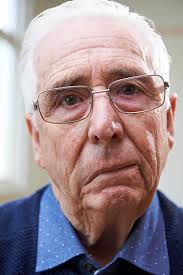
Brain aneurysm, stroke, meningitis, seizures, anxiety, head injury, brain tumor, and headaches are all conditions that can cause or be associated with headaches. Here’s a brief overview of each:
- Brain aneurysm: is a bulging or ballooning in the wall of a blood vessel in the brain. If the aneurysm ruptures, it can cause a sudden and severe headache, often described as a “thunderclap” headache.
- Stroke: occurs when the blood supply to the brain is disrupted, often due to a blood clot or a burst blood vessel. Headache can be a symptom of a stroke, particularly if it is accompanied by other symptoms such as weakness, numbness, or difficulty speaking.
- Meningitis: is an infection of the protective membranes that surround the brain and spinal cord. Headache is a common symptom of meningitis, along with fever, neck stiffness, and a rash.
- Seizures: can cause a variety of symptoms, including headache. In some cases, a seizure may be the result of an underlying condition such as a brain tumor or infection.
- Anxiety: can cause tension headaches, which are characterized by a dull, aching pain that typically affects both sides of the head.
- Head injury: such as concussions, can cause headaches. If the headache is severe or accompanied by other symptoms, such as confusion, loss of consciousness, or vomiting, it may indicate a more serious injury and require immediate medical attention.
- Brain tumor: can cause headaches, particularly if it is pressing on or interfering with brain tissue. Other symptoms of a brain tumor can include seizures, changes in vision or hearing, and cognitive or personality changes.
Complications of headaches
Headaches can lead to several complications, depending on their underlying cause and severity. Some of the potential complications of headaches include:
- Impaired quality of life: Frequent or severe headaches can significantly impact a person’s quality of life, including their ability to work, study, and perform daily activities.
- Medication overuse headache: Overuse of pain-relieving medications to treat headaches can lead to medication overuse headaches, which are often more severe and harder to treat.
- Depression and anxiety: Chronic headaches can lead to depression and anxiety, which can further exacerbate the symptoms.
- Stroke: Certain types of headaches, such as thunderclap headaches or migraines with aura, may increase the risk of stroke.
- Seizures: Severe headaches can sometimes trigger seizures in people with epilepsy or other underlying neurological conditions.
- Brain damage: In rare cases, severe headaches can be a sign of a more serious underlying condition, such as a brain tumor or an aneurysm, which can cause brain damage or even be life-threatening.
It is important to seek medical attention if headaches become severe or frequent to prevent potential complications.
Prevention of headaches

Preventing headaches depends on the underlying cause of the headache. However, there are some general lifestyle changes that can help reduce the frequency and severity of headaches. These include:
- Avoiding triggers: Identify and avoid triggers that may cause headaches such as certain foods, drinks, environmental factors, and stress.
- Maintaining a healthy lifestyle: Regular exercise, adequate sleep, a balanced diet, and staying hydrated can help prevent headaches.
- Managing stress: Stress can be a significant trigger for headaches, so practicing relaxation techniques such as deep breathing, meditation, and yoga can help manage stress.
- Limiting caffeine and alcohol consumption: Overuse of caffeine and alcohol can lead to headaches, so it is essential to limit intake.
- Establishing regular sleep patterns: Going to bed and waking up at the same time each day can help regulate sleep patterns and reduce the frequency of headaches.
- Avoiding overuse of medications: Overuse of pain-relieving medications can lead to medication overuse headaches, which can be more severe and harder to treat.
- Seeking treatment for underlying medical conditions: If headaches are caused by an underlying medical condition such as high blood pressure or sinusitis, seeking treatment for the underlying condition can help prevent headaches.
Treatment for headaches

Treatment for headaches depends on the underlying cause and the type of headache. However, some general treatment options include:
- Pain-relieving medications: Over-the-counter pain relievers such as ibuprofen, acetaminophen, or aspirin can help relieve mild to moderate headaches. In some cases, prescription medications may be necessary for severe or chronic headaches.
- Triptans: These medications can help relieve migraines by narrowing blood vessels and reducing inflammation.
- Anti-nausea medications: These medications can help relieve nausea and vomiting associated with migraines.
- Preventive medications: In some cases, prescription medications such as beta-blockers, antidepressants, or anticonvulsants may be used to prevent chronic headaches.
- Lifestyle modifications: Lifestyle changes such as maintaining a regular sleep pattern, reducing stress, and avoiding triggers can help prevent headaches.
- Complementary therapies: Relaxation techniques such as deep breathing, meditation, and acupuncture may be used as complementary therapies to relieve headache pain.
It is important to consult a healthcare provider before starting any new medications or treatments for headaches, especially if over-the-counter medications are not effective, or if headaches are severe or frequent. In some cases, underlying medical conditions may require specific treatments, and a healthcare provider can help identify and address these underlying conditions.
Home remedies for headaches
There are several home remedies that can help relieve headache pain, including:
- Cold compress: Applying a cold compress to the affected area can help reduce inflammation and relieve headache pain.
- Heat therapy: Applying a warm compress or taking a warm bath can help relax tense muscles and relieve headache pain.
- Massage: Gentle massage of the temples, neck, and shoulders can help relieve tension and reduce headache pain.
- Relaxation techniques: Deep breathing, meditation, and yoga can help reduce stress and tension that can trigger headaches.
- Aromatherapy: Essential oils such as lavender or peppermint can be used to relieve headache pain when applied to the temples or inhaled.
- Hydration: Drinking plenty of water can help reduce the risk of dehydration headaches.
- Avoiding triggers: Avoiding triggers such as certain foods, drinks, and stress can help prevent headaches.
- Over-the-counter medications: Over-the-counter pain relievers such as ibuprofen, acetaminophen, or aspirin can help relieve mild to moderate headaches.
It is important to note that home remedies may not work for everyone, and it is essential to consult a healthcare provider if headache pain is severe or frequent, or if over-the-counter medications are not effective. Additionally, some headaches may be a symptom of an underlying medical condition that requires specific treatment, and it is important to identify and treat the underlying condition.
Natural management of headaches
There are several natural management strategies that can help prevent and relieve headaches, including:
- Maintain a healthy diet: Eating a balanced diet and avoiding trigger foods can help prevent headaches.
- Regular exercise: Engaging in regular physical activity can help reduce stress and tension that can trigger headaches.
- Sleep: Getting enough sleep and maintaining a regular sleep schedule can help prevent headaches.
- Stress management: Practicing relaxation techniques such as meditation, deep breathing, or yoga can help reduce stress and tension that can trigger headaches.
- Acupuncture: This alternative therapy involves the insertion of thin needles into specific points on the body and can help relieve headache pain.
- Chiropractic care: This alternative therapy involves spinal adjustments that can help reduce tension and relieve headache pain.
- Herbal remedies: Certain herbs such as ginger, butterbur, and feverfew have been found to be effective in preventing and relieving headaches.
- Accupressure: is a technique that involves applying pressure to specific points on the body to alleviate various symptoms, including headaches. Remember to apply gentle and firm pressure, as per your tolerance level, and always breathe deeply to help your body relax. Acupressure is generally safe, but if you have a medical condition, it’s best to consult with a healthcare professional before trying any new therapies. Here are some guidelines on how to locate and apply pressure to various points on the body to alleviate headaches:
Third Eye Point:
 This point is located in the middle of the forehead, between the eyebrows. Apply firm pressure with your index and middle fingers for 1-2 minutes while breathing deeply.
This point is located in the middle of the forehead, between the eyebrows. Apply firm pressure with your index and middle fingers for 1-2 minutes while breathing deeply.The Third Eye Point is also known as GV 24.5 in traditional Chinese medicine and is believed to be helpful in relieving headaches, as well as other symptoms such as eye strain, sinus congestion, and insomnia. It is located between the eyebrows, in the indentation where the bridge of the nose meets the forehead.
To apply acupressure to the Third Eye Point, follow these steps:
- Find the point: Place the index and middle fingers of one hand on the indentation between the eyebrows. You should feel a slight dip in the bone.
- Apply pressure: Use gentle pressure with your fingers to massage the area in a circular motion. Gradually increase the pressure as you feel comfortable, but be careful not to apply too much pressure as the area is sensitive. You can also hold the point with steady pressure for 1-2 minutes.
- Breathe deeply: Take deep breaths while applying pressure to help relax and calm the body.
- Repeat as needed: You can repeat this process as many times as necessary throughout the day, or until you feel relief from your headache.
Union Valley Point:
 This point is located between the thumb and index finger, in the fleshy part of the hand. Apply firm pressure with your thumb for 1-2 minutes on both hands while breathing deeply.
This point is located between the thumb and index finger, in the fleshy part of the hand. Apply firm pressure with your thumb for 1-2 minutes on both hands while breathing deeply.Union Valley Point (also known as Large Intestine 4 or LI4) is a popular acupressure point that is believed to be effective in relieving headaches and migraines. It is located in the fleshy web between the thumb and index finger, and is easy to access.
To apply acupressure to the Union Valley Point, follow these steps:
- Find the point: Place your thumb and index finger on the web between your thumb and index finger on the opposite hand. The point is located at the highest point of the muscle, where it feels most tender.
- Apply pressure: Once you have located the point, use your thumb to apply firm pressure to the area. Start with a gentle pressure and gradually increase it as you feel comfortable. Hold the pressure for about 30 seconds, then release and repeat on the other hand.
- Repeat as needed: You can repeat this process as many times as necessary throughout the day, or until you feel relief from your headache.
Temple Region:
 This point is located in the temple region, at the outer corner of the eyebrow. Apply gentle pressure with your index and middle fingers for 1-2 minutes while breathing deeply.
This point is located in the temple region, at the outer corner of the eyebrow. Apply gentle pressure with your index and middle fingers for 1-2 minutes while breathing deeply.The temple region is a common area for tension headaches and migraine headaches. There are a few acupressure points in this region that may help to alleviate headache pain:
- Taiyang (Extra Point): This point is located at the temple, in the depression anterior to the ear, and is commonly used to relieve headache pain. To locate this point, place your fingers on your temples and move them slightly forward until you feel a small depression. Use your fingertips to apply firm pressure to this point for 1-2 minutes while taking deep breaths.
- Zan Zhu (Gallbladder Meridian Point): This point is located at the inner end of the eyebrow, closest to the bridge of the nose. To locate this point, place your thumb on the bridge of your nose and your index finger on the inner end of your eyebrow, then apply pressure to the area where your fingers meet. Use your fingertips to apply firm pressure to this point for 1-2 minutes while taking deep breaths.
- Yintang (Third Eye Point): This point is located between the eyebrows, in the indentation where the bridge of the nose meets the forehead. To locate this point, place your thumb on the bridge of your nose and your index finger on the point between your eyebrows, then apply pressure to the area where your fingers meet. Use your fingertips to apply firm pressure to this point for 1-2 minutes while taking deep breaths.
Remember to apply pressure with firm but gentle pressure, and stop immediately if you experience any sharp or severe pain. Acupressure points in the temple region can help to alleviate headache pain, but they should not be considered a substitute for medical treatment. If you have a medical condition, it’s important to consult with your healthcare provider before trying any new therapies.
Shoulder Well Point:

The Shoulder Well Point, also known as Jian Jing in traditional Chinese medicine, is an acupressure point located on the outer edge of the shoulder muscle, halfway between the base of the neck and the tip of the shoulder. Stimulating this point can help relieve tension headaches, neck pain, and shoulder pain.
To apply pressure to this point, follow these steps:
- Sit or stand in a comfortable position and locate the point on your shoulder muscle.
- Use the thumb or fingertips of the opposite hand to apply firm pressure to the point.
- Apply circular or back-and-forth pressure to the point for 1-2 minutes while taking deep breaths.
- Repeat on the other shoulder if desired.
You may experience mild to moderate discomfort or tenderness while applying pressure to this point, but it should not be painful. If you experience any sharp or severe pain, stop immediately and consult a healthcare professional. Applying pressure to the Shoulder Well Point can help relieve tension headaches and promote relaxation, but it should not be considered a substitute for medical treatment. If you have a medical condition, it’s important to consult with your healthcare provider before trying any new therapies.
Drilling Bamboo Point:

The Drilling Bamboo Point is an acupressure point located at the base of the skull, in the hollows on either side of the spine. This point is also referred to as the “Gates of Consciousness” in traditional Chinese medicine.
To apply pressure to this point, follow these steps:
- Sit comfortably and place your hands on your lap or on a surface in front of you.
- Use your thumbs to locate the hollows at the base of your skull on either side of your spine.
- Apply gentle and firm pressure with your thumbs to both points simultaneously.
- Hold the pressure for 1-2 minutes while taking deep breaths.
You may experience a mild to moderate sensation of discomfort while applying pressure to this point. However, if you experience any sharp or severe pain, stop immediately and consult a healthcare professional. Applying pressure to the Drilling Bamboo Point can help relieve headaches, neck pain, and stress, but it should not be considered a substitute for medical treatment. If you have a medical condition, it’s important to consult with your healthcare provider before trying any new therapies.
It is important to note that while acupressure can be helpful for relieving headaches, it is not a substitute for medical treatment. If you experience severe or persistent headaches, or if your headaches are accompanied by other symptoms such as nausea, vomiting, or vision changes, it is important to seek medical attention.
Herbal remedies
There are several herbal remedies that have been found to be effective in preventing and relieving headaches. These include:
Here are some guidelines on how to prepare and consume the following herbal remedies to prevent or relieve headache:
- Coffee:
 Drinking coffee can have different effects on different people. While for some people it may help alleviate headaches, for others it may actually trigger or worsen them. Caffeine is a stimulant that can cause blood vessels in the brain to constrict, which can sometimes lead to headaches. However, caffeine can also have a pain-relieving effect by blocking the action of a neurotransmitter called adenosine, which is involved in the sensation of pain.If you are experiencing a headache and suspect that it may be related to your coffee consumption, you may want to try reducing your caffeine intake or switching to decaf to see if your symptoms improve. Alternatively, you may want to try drinking more water or other fluids, as dehydration can also be a common cause of headaches. It’s important to note that headaches can have many different causes, so if you are experiencing persistent or severe headaches, you should consult with a healthcare professional to rule out any underlying medical conditions.
Drinking coffee can have different effects on different people. While for some people it may help alleviate headaches, for others it may actually trigger or worsen them. Caffeine is a stimulant that can cause blood vessels in the brain to constrict, which can sometimes lead to headaches. However, caffeine can also have a pain-relieving effect by blocking the action of a neurotransmitter called adenosine, which is involved in the sensation of pain.If you are experiencing a headache and suspect that it may be related to your coffee consumption, you may want to try reducing your caffeine intake or switching to decaf to see if your symptoms improve. Alternatively, you may want to try drinking more water or other fluids, as dehydration can also be a common cause of headaches. It’s important to note that headaches can have many different causes, so if you are experiencing persistent or severe headaches, you should consult with a healthcare professional to rule out any underlying medical conditions. - Ginger:
 has anti-inflammatory properties and can help to reduce inflammation in the body that can cause headaches. It can be consumed in the form of ginger tea, capsules, or as a spice in food. Here’s how to prepare it:
has anti-inflammatory properties and can help to reduce inflammation in the body that can cause headaches. It can be consumed in the form of ginger tea, capsules, or as a spice in food. Here’s how to prepare it:
- Peel and slice a piece of fresh ginger root (about 2-3 inches in length).
- Add the ginger slices to a pot of water and bring to a boil.
- Reduce heat and simmer for about 15-20 minutes.
- Strain the ginger tea and add honey and lemon juice to taste.
- Drink the tea while it’s still warm.
You can also chew on a piece of fresh ginger root to help relieve a headache.
Feverfew:
 is a natural remedy that can help to prevent migraines. It can be taken as a supplement in capsule form. Here’s how to prepare it:
is a natural remedy that can help to prevent migraines. It can be taken as a supplement in capsule form. Here’s how to prepare it:
- Take a fresh feverfew leaf and chew it slowly, swallowing the juice.
- You can also make a tea by steeping fresh or dried feverfew leaves in hot water for about 10-15 minutes.
- Strain the tea and add honey or lemon to taste.
- Drink the tea up to three times a day.
Butterbur:
 is another natural remedy that can help to prevent migraines. It can be taken as a supplement in capsule form. Here’s how to prepare it:
is another natural remedy that can help to prevent migraines. It can be taken as a supplement in capsule form. Here’s how to prepare it:
- Take a butterbur extract capsule as directed by your healthcare provider. It should not be consumed raw, as it contains compounds that can be toxic in large amounts.
Peppermint:
 has a cooling effect and can help to relieve tension headaches when applied topically or inhaled. Here’s how to prepare it:
has a cooling effect and can help to relieve tension headaches when applied topically or inhaled. Here’s how to prepare it:
- Boil a cup of water and add 1-2 teaspoons of dried peppermint leaves.
- Cover and steep for about 10-15 minutes.
- Strain the tea and add honey or lemon to taste.
- Drink the tea while it’s still warm.
You can also apply peppermint essential oil topically to the temples or neck to relieve headache pain.
Willow bark:
 contains a compound called salicin, which is similar to aspirin and can help to relieve pain and inflammation associated with headaches. It can be taken in the form of tea or capsules. Here’s how to prepare it:
contains a compound called salicin, which is similar to aspirin and can help to relieve pain and inflammation associated with headaches. It can be taken in the form of tea or capsules. Here’s how to prepare it:
- Add 1-2 teaspoons of dried willow bark to a pot of water and bring to a boil.
- Reduce heat and simmer for about 15-20 minutes.
- Strain the tea and add honey or lemon to taste.
- Drink the tea while it’s still warm.
Note that willow bark can interact with certain medications and should not be used by people with bleeding disorders or allergies to aspirin.
It is important to note that herbal remedies can have side effects and may interact with other medications. It is essential to consult a healthcare provider before taking any herbal remedies, especially if over-the-counter medications are not effective, or if headaches are severe or frequent. Additionally, some headaches may be a symptom of an underlying medical condition that requires specific treatment, and it is important to identify and treat the underlying condition.
When to seek urgent medical care
It is important to seek urgent medical care if you experience any of the following symptoms in relation to a headache:
- Sudden and severe headache, often described as a “thunderclap” headache.
- Headache accompanied by confusion, difficulty speaking or understanding speech, weakness or numbness in the arms or legs, or a change in vision or consciousness.
- Headache accompanied by high fever, stiff neck, rash, or vomiting.
- Headache that follows a head injury or trauma.
- Headache that is accompanied by a seizure.
- Headache that develops after age 50.
- Headache that is progressively worsening over time.
These symptoms can indicate a potentially life-threatening condition such as a brain aneurysm, stroke, meningitis, or a brain tumor. It is important to seek immediate medical attention if any of these symptoms occur.
Disclaimer: The information provided in this content is for general informational purposes only. It is not intended as medical or healthcare advice, diagnosis, or treatment. Always seek the advice of a qualified healthcare professional with any questions you may have regarding a medical condition or healthcare decisions.


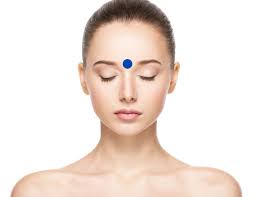 This point is located in the middle of the forehead, between the eyebrows. Apply firm pressure with your index and middle fingers for 1-2 minutes while breathing deeply.
This point is located in the middle of the forehead, between the eyebrows. Apply firm pressure with your index and middle fingers for 1-2 minutes while breathing deeply.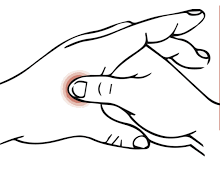 This point is located between the thumb and index finger, in the fleshy part of the hand. Apply firm pressure with your thumb for 1-2 minutes on both hands while breathing deeply.
This point is located between the thumb and index finger, in the fleshy part of the hand. Apply firm pressure with your thumb for 1-2 minutes on both hands while breathing deeply.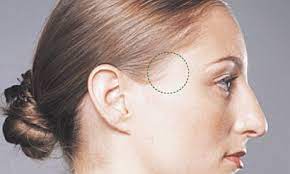 This point is located in the temple region, at the outer corner of the eyebrow. Apply gentle pressure with your index and middle fingers for 1-2 minutes while breathing deeply.
This point is located in the temple region, at the outer corner of the eyebrow. Apply gentle pressure with your index and middle fingers for 1-2 minutes while breathing deeply.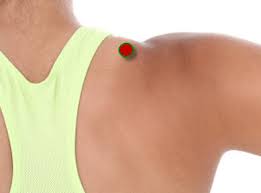
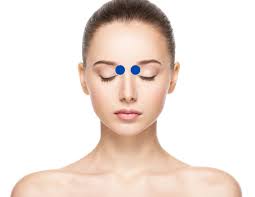
 Drinking coffee can have different effects on different people. While for some people it may help alleviate headaches, for others it may actually trigger or worsen them. Caffeine is a stimulant that can cause blood vessels in the brain to constrict, which can sometimes lead to headaches. However, caffeine can also have a pain-relieving effect by blocking the action of a neurotransmitter called adenosine, which is involved in the sensation of pain.If you are experiencing a headache and suspect that it may be related to your coffee consumption, you may want to try reducing your caffeine intake or switching to decaf to see if your symptoms improve. Alternatively, you may want to try drinking more water or other fluids, as dehydration can also be a common cause of headaches. It’s important to note that headaches can have many different causes, so if you are experiencing persistent or severe headaches, you should consult with a healthcare professional to rule out any underlying medical conditions.
Drinking coffee can have different effects on different people. While for some people it may help alleviate headaches, for others it may actually trigger or worsen them. Caffeine is a stimulant that can cause blood vessels in the brain to constrict, which can sometimes lead to headaches. However, caffeine can also have a pain-relieving effect by blocking the action of a neurotransmitter called adenosine, which is involved in the sensation of pain.If you are experiencing a headache and suspect that it may be related to your coffee consumption, you may want to try reducing your caffeine intake or switching to decaf to see if your symptoms improve. Alternatively, you may want to try drinking more water or other fluids, as dehydration can also be a common cause of headaches. It’s important to note that headaches can have many different causes, so if you are experiencing persistent or severe headaches, you should consult with a healthcare professional to rule out any underlying medical conditions. has anti-inflammatory properties and can help to reduce inflammation in the body that can cause headaches. It can be consumed in the form of ginger tea, capsules, or as a spice in food. Here’s how to prepare it:
has anti-inflammatory properties and can help to reduce inflammation in the body that can cause headaches. It can be consumed in the form of ginger tea, capsules, or as a spice in food. Here’s how to prepare it: is a natural remedy that can help to prevent migraines. It can be taken as a supplement in capsule form. Here’s how to prepare it:
is a natural remedy that can help to prevent migraines. It can be taken as a supplement in capsule form. Here’s how to prepare it: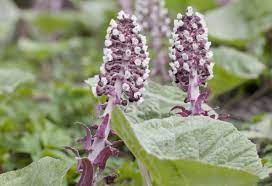 is another natural remedy that can help to prevent migraines. It can be taken as a supplement in capsule form. Here’s how to prepare it:
is another natural remedy that can help to prevent migraines. It can be taken as a supplement in capsule form. Here’s how to prepare it: has a cooling effect and can help to relieve tension headaches when applied topically or inhaled. Here’s how to prepare it:
has a cooling effect and can help to relieve tension headaches when applied topically or inhaled. Here’s how to prepare it: contains a compound called salicin, which is similar to aspirin and can help to relieve pain and inflammation associated with headaches. It can be taken in the form of tea or capsules. Here’s how to prepare it:
contains a compound called salicin, which is similar to aspirin and can help to relieve pain and inflammation associated with headaches. It can be taken in the form of tea or capsules. Here’s how to prepare it: